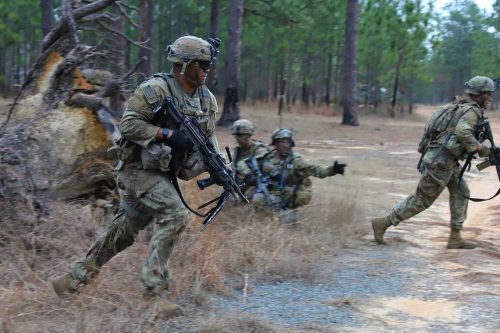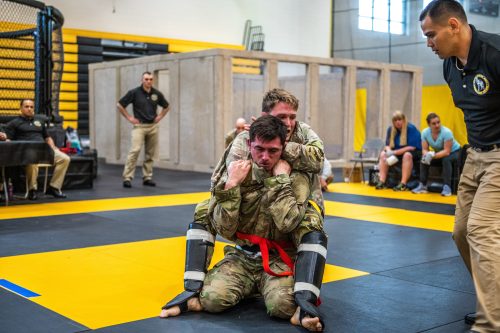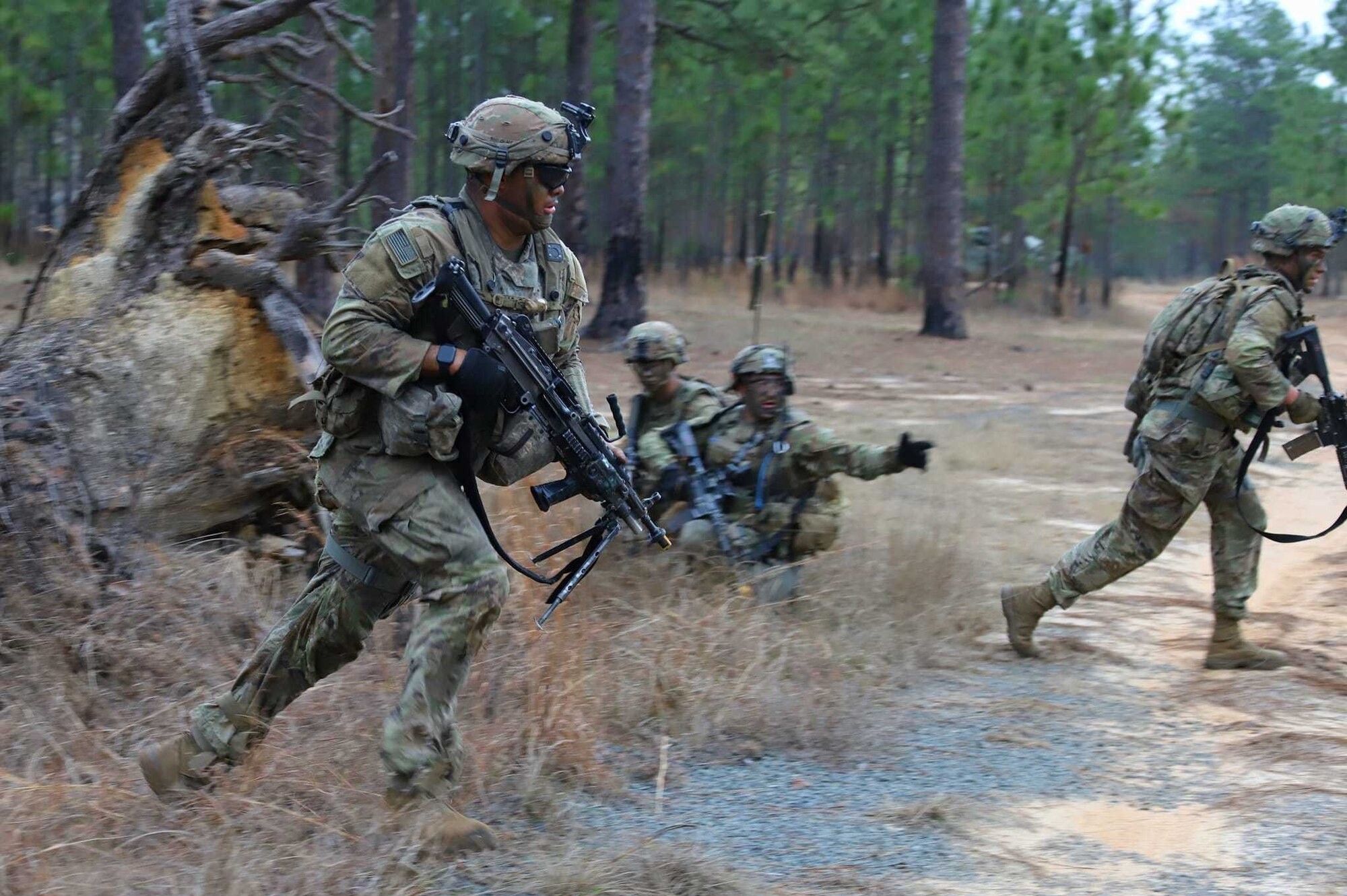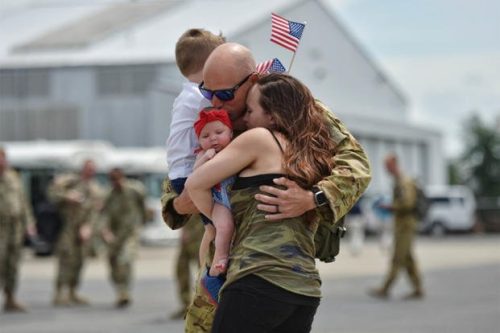
When the Secretary of War talks about purging the ranks, most people think firing the overweight will solve the problem. It will not.
Military professionalism reform has nothing to do with quick fixes and everything to do with culture, training, and building true professionals.
The problem is not that some people are lazy. The problem is the system that produces them.
Too many senior leaders want to drag the force back to the world they remember from when they first joined. They recall their own hardships and believe the answer lies in recreating that era.
The problem with that is simple: the world was different then. Society was different. Recruiting pools were different. Family structures were different. The threats were different.
There is no going backward. There is only forward.
The current force operates on leadership norms and incentives that were built for a different era. Those norms rewarded cheap labor, coercion, and endurance rather than skill, resilience, and absolute professionalism.
Until that framework changes, firing the loudest examples of failure will only rearrange the deck chairs.
The old model still runs the show
The military was structured around conscription and mass mobilization. Leadership is coercive mainly. Get the most out of the few resources you have. Apply maximum pressure and minimal reward.
That model works for moving mountains at low cost. It fails at producing skilled professionals who can face complex, ambiguous threats.
We cycle through this pattern every time we transition from war to a post-war period. During conflict, the mission is obvious. Training is hard. People accept the price because the stakes are clear.
After the war, the urgency evaporates. Lessons get buried. Budgets shrink. Leadership settles for low-cost, low-skill personnel who keep the lights on. The mission becomes an admin burden rather than a demanding profession.
 The human cost is real
The human cost is real
The reward for being good at government work is more work. High performers often get assigned additional tasks instead of being rewarded with support. That leads to burnout. It leads to families fractured by long deployments and fiscal instability. It leads to trauma, divorce, and too often, tragedies like substance abuse or suicide.
When leadership normalizes this, they normalize a breakdown of the social and moral fabric inside the force. People stop seeing each other as humans to be protected and start seeing metrics and outputs as a means to squeeze. That has real-world costs. It degrades readiness. It destroys retention. It kills careers. It kills people.
The amateur economics fallacy
Here is the core mistake policymakers keep making. They assume amateurs are cheaper. They do not track the full cost of those amateurs. A cheap hire who delivers zero for years is a waste. Worse still, seven cheap hires who collect pay but avoid responsibility impose massive hidden costs on the organization. They siphon time, morale, and resources away from the small number of people who actually carry the mission.
Flip the model. Invest significantly more up front to produce professionals. Train them and their instructors better, not just harder. Pay them properly. Provide them with the conditions to build families and lives that can withstand the strain of service.
The initial price tag will be larger. The long-term output will be dramatically higher. A professional force returns value in reliability, capability, and reduced downstream disaster costs.
The culture is broken from the top down
Suppose we cannot get service members into an air-conditioned building to spar against their coworkers on padded mats, or to examine shooting through the lens of twenty years of combat data, experience, and media; then the problem is not training. The problem is culture.
A broken culture, from the top down, tells people that these skills are optional, that performance is merely a matter of paperwork, and that discomfort is abuse rather than a sign of development.
The mindset that “every service member must be a rifleman” only narrows the vision. A rifleman is a member of a team. The focus becomes marksmanship and movement, which are essential but not sufficient.
Fighting is fighting. And fighting demands more than shooting skills. From years of shooting competitions, I can tell you that shooting is NOT fighting.
The one valuable transfer is learning to handle performance anxiety — to commit under pressure. That matters. But it does not replicate the adversity of a real fight.
Shooting alone cannot prepare you for the physical, chaotic, and personal violence of close combat.

The institution enshrines metrics that reward compliance and penalize or shut down initiative.
The individual high performer who carries more than their share of the mission is often branded a “toxic” because they expose the weaknesses of others. That inversion guarantees mediocrity.
There has to be a physical crucible that strips away pretense. People, as an organization, must face real physical adversity so that the uncommitted are revealed.
Weak individuals in positions of authority do more damage in the post-war era than any external threat, because they create the conditions where military values prioritize empty slogans about equity and inclusion over capability and culture.
The modern service member lived through COVID-19, but the real pandemic the military has not overcome is bitchassness.
Bitchassness is the condition of avoiding discomfort, responsibility, and adversity while still wanting the rewards, recognition, or authority of someone who paid the price.
It shows up when people:
- Refuse to step on the mat, but still want to run training.
- Avoid physical hardship, but add layers of bureaucracy for others.
- Value slogans over skills.
- Hide behind standards that measure compliance instead of capability.
At its core, bitchassness is entitlement without effort. It is a weakness disguised. It corrodes culture because it rewards those most committed to protecting an individual image and punishes those most committed to building the team.
Combatives is the cure to bitchassness. Combatives demands effort, humility, and physical courage. It humbles the arrogant and strengthens the willing. It builds a culture that values capability, not paperwork.
Combatives make people better leaders. It forces every participant to start unskilled, earn skills through pressure, and pass that experience forward. Over time, you learn how to train like an adult instead of cramming 20 years into 20 minutes by building layer by layer.
You provide honest experiences to one another and develop a better understanding of each other because combatives exposes you in ways nothing else can.
That exposure allows people to admit vulnerability without shame, and with collective participation, we learn to be both relentless and graceful.
Leadership grows from that balance.
Without it, we continue to promote people whose only skill is avoiding discomfort — and they are the ones who make things hardest on the force.
Professionalism is an effort applied honestly
Being professional is not a medal or a title. It is a behavior. It means showing up when it is hard. It means refusing to treat duty as a checkbox. It means building baseline skills that transfer under stress. It means leaders who are measured by whether they built capability, not by how many reports they produced.
Too many units reward volume and compliance instead of results and endurance. That creates a culture where the best move to protect their own time and families rather than to carry more of the mission.
That is rational behavior inside a broken incentive system. The fix is to change the incentives.
What real reform looks like
If the goal is to build a military of faithful volunteers — the best of the best — the system must stop pretending that everyone belongs.
In any organization, about 30 percent of people shoulder the mission. The rest ride along. That ratio tells us where reform must start.
- Raise attrition at basic training. Basic should not be a pass-through pipeline. Everyone is already familiar with the standards — PT scores, published requirements, and public manuals. Maintain those standards exactly as they are, but stop graduating 100 percent of the class. Graduate 30 percent. Seven out of ten who walk through the gate should be sent home. That is not cruelty. That is professionalism. And if we are paying recruits during training, part of that money should be set aside so anyone who fails has the dignity to buy a ticket back home.
- Voluntary, not coerced. Just like any pipeline, people should be able to quit at any point in time. If they do not want to be there, get them off the payroll immediately. We are not running a prison. We are not using conscripts for cheap labor. No mopping floors, no busywork. You are either training to fight or you are gone.
- Intervene early with a mindset. From day one, the message should be clear: the reason you wear camouflage is either to sneak up and kill someone or to hide from someone trying to kill you. Everything builds from that. A good service member is someone you would willingly walk into a building with, knowing the enemy is inside. That is the baseline test.
- Front-load fundamental combat skills. The first month of basic training should be an immersion in three key areas: combat training, marksmanship, and weightlifting. Add running and rucking for movement capacity. Do this before layering on anything else. Build fighters first, then train them in the technical skills specific to their specialty. A durable, strong, skilled fighter is the only reliable foundation.
- Reward the challenging jobs. Individuals performing the most demanding work should receive more competitive incentive pay and opportunities for career advancement. A gunner in combat arms should not be compensated like a staff clerk. High-risk, high-demand roles require a higher return if we expect people to continue doing them.
- Add step increases without rank inflation. Not everyone wants command responsibility, but we should retain good people in uniform by allowing them to advance in pay if they excel at their jobs. Step increases at rank retain competence without forcing people into roles for which they are unfit or unwilling to take on.
- Universal two-year liberal arts degree. Every service member should leave with the same associate’s degree from a Department of War-accredited college. A baseline two-year liberal arts degree provides everyone with the foundation to pursue their desired path next. From there, they can specialize in fields that align with their skills and interests. This makes the force more competitive, adaptable, and compensated externally, and prevents the government-worker conditioning that currently dominates military education.
- Protected family time. Twice a year, every base should shut down for two whole weeks — one in observance of Independence Day, one in observance of Christmas. No duty, no admin, no “catch-up” work. True downtime. That provides service members with 28–30 additional days of paid time off, in addition to the leave they already accrue. It forces the system to respect family building instead of grinding people down.
- Marriage and family support. Chaplains should lead with pre-marital counseling and campaigns that focus on building strong families. Every program must prioritize family, because without something to fight for, no one will fight. Preserving the American family is as strategic as preserving equipment or ammunition.
- Accountability in fitness and marksmanship. Every annual duty performance evaluation should include fitness scores, body composition assessments, and marksmanship qualifications. Not just pass/fail. Not just checked boxes. These scores must carry significant weight in decisions regarding promotion and retention. The body, the rifle, and the fight are not side requirements. They are the foundation.
Closing thought
Firing people who are visibly out of shape is cathartic and makes for easy headlines. It does not fix the incentives that produced the problem. If the goal is to build a military that can fight and win over the course of decades, the reform must be systemic.
Invest in people first. Train them so they can be someone who can be trusted. Pay them so they can be stable. Measure outcomes, not inputs. And above all, build a culture where weakness does not rise to power, and where combatives serves as the crucible that reminds everyone that bitchassness is the real enemy inside the force.

 The human cost is real
The human cost is real